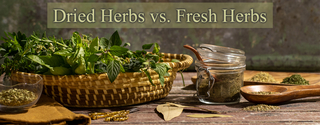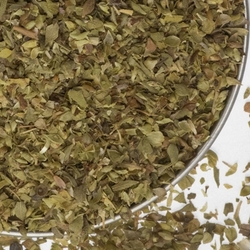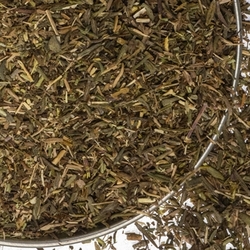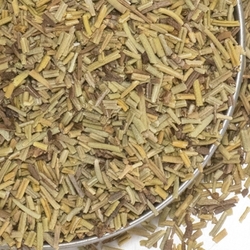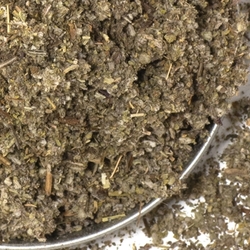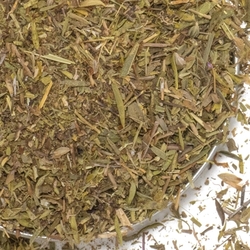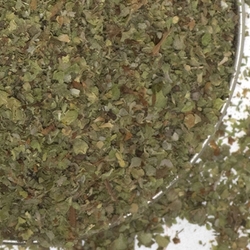Spice Cabinet 101: Getting the Most Out of Your Dried Herbs
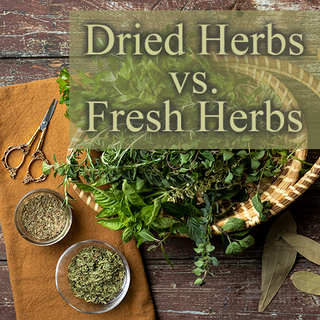
Getting the Most out of Your Herbs: Dried vs. Fresh
People have been drying herbs for about as long as we’ve embraced their flavorful nature. Dried herbs have a robust, spicy, “peppery” flavor, while their fresh counterparts are airy and bright. Herbs get their flavors from chemical compounds called volatile oils; when the water in the cell walls evaporates as the herbs dehydrate, volatile oils become more concentrated. This concentration creates deeper flavors.
Store dried herbs in a cool, dry place away from direct sunlight. The ideal temperature should remain constant and go no higher than 70° F. Keep humidity as low as possible. Properly stored herbs remain viable for about a year in your pantry.
Herbs don’t have a formal expiration date. They won’t spoil in a pantry without introducing an outside contaminant, but they will fade over time. Herbs that lack color and aroma are probably past the point of use. You can pinch some of an herb in question and rub it between your fingers to see if any fragrance rises; if you can smell it, you can probably use it, though you might need more than a recipe calls for to get their flavor. Dispose of herbs if you don’t get an authentic aroma.
Table of Contents
Can You Rehydrate Dried Herbs?
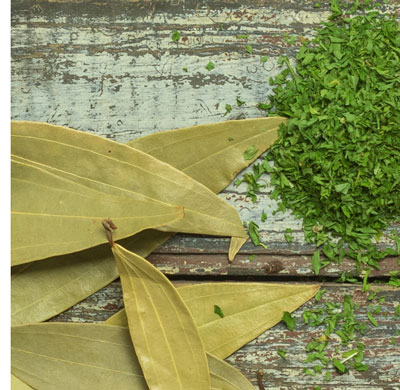 The most effective way to rehydrate dried herbs and maximize their flavors is by adding them directly to whatever you’re cooking. Herbs have thin walls and rehydrate quickly with whatever moisture is present in a dish. Rehydrating them during cooking allows the flavors of the herb to release into the dish, infusing your food with as much flavor as possible.
The most effective way to rehydrate dried herbs and maximize their flavors is by adding them directly to whatever you’re cooking. Herbs have thin walls and rehydrate quickly with whatever moisture is present in a dish. Rehydrating them during cooking allows the flavors of the herb to release into the dish, infusing your food with as much flavor as possible.
You can rehydrate dried herbs by soaking them in hot water, but it’s not recommended. Volatile oils will pull from the herbs into the hot water. The flavorful oils wash away if you drain the herbs into the sink.
Cooking with Herbs
When you cook with herbs, you need to be clear about what you’re trying to achieve with that herb and understand the properties of the herbs you plan to use.
Sturdy herbs, like rosemary or bay leaves, are best added at the beginning of cooking to give them time to flavor a dish; this is true whether they are fresh or dry. The same principle applies to delicate herbs; they are best added toward the end of cooking.
Always shake herbs from their jar into your hand or a measuring spoon. Holding them over a steaming pot and shaking them in from the jar can cause steam to rise into the container and settle on the herbs. When the jar is re-sealed, this trapped moisture can cause mold.
When to Use Dried Herbs
Dried herbs should be added at least twenty minutes before cooking is complete, allowing them enough time to rehydrate and release as much flavor as possible. “Woody” herbs, like oregano, bay leaves, thyme, rosemary, sage, savory, and marjoram, are the best dried herbs to cook with. They will not lose potency during cooking.
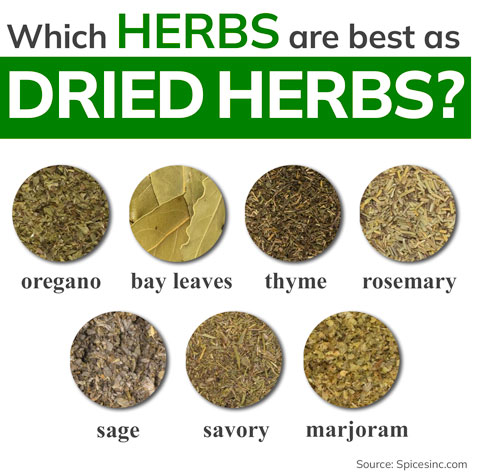 Use these dried herbs when cooking liquid-heavy dishes, like sauces, soups, or stews. They perform most effectively in an environment that protects herbs against direct heat. You can also mix dried herbs into a rub for chicken that goes under the skin, a compound butter to add to steak, or with slow or sous vide cookers. Direct heat, which you have when you cook on a grill, can burn dried herbs and create an unappealing meal.
Use these dried herbs when cooking liquid-heavy dishes, like sauces, soups, or stews. They perform most effectively in an environment that protects herbs against direct heat. You can also mix dried herbs into a rub for chicken that goes under the skin, a compound butter to add to steak, or with slow or sous vide cookers. Direct heat, which you have when you cook on a grill, can burn dried herbs and create an unappealing meal.
Delicate, leafy herbs, like basil, parsley, chives, cilantro, and tarragon, need a bit more care if you plan to cook with them. They tend to lose their flavor when exposed to prolonged heat, so they should be added at the end of cooking and are best as a support or flavor base for fresh herbs. You can often use fresh and dried herbs hand-in-hand to support a dish and exploit the different nuances of flavor that fresh and dried herbs can deliver. Add dried basil into a stir fry right before you finish cooking to hint at its peppery flavor, then garnish with fresh basil to enjoy its full range of flavor with its complex, anise-lemon freshness.
When adding dried herbs to a dish, wake up their flavors by rubbing them between your hands. The heat from your hands and the pressure from rubbing will coax out the oils inside the herbs. Very firm herbs, like rosemary, can be cracked and ground in a mortar and pestle to jump-start their flavor. This is an excellent way to test the viability of your herbs; if they haven’t softened or don’t produce an aroma on your hands, it’s a good sign that they’ve outlived their usefulness and should be discarded.
When to Use Fresh Herbs
Fresh herbs that are leafy or delicate, like parsley and cilantro leaves, chives, dill, basil, and tarragon, are often best when added right at the end of cooking. They can also be added at any appropriate point when preparing a raw dish, like guacamole. Fresh woody herbs, like rosemary, thyme, bay leaves, and even the stems from fresh parsley and cilantro, should be added at the beginning of cooking to layer in flavor. The stems don’t require as much cooking time to maximize flavor, but tougher fresh herbs do need the benefits of time and heat to make the most of their attributes.
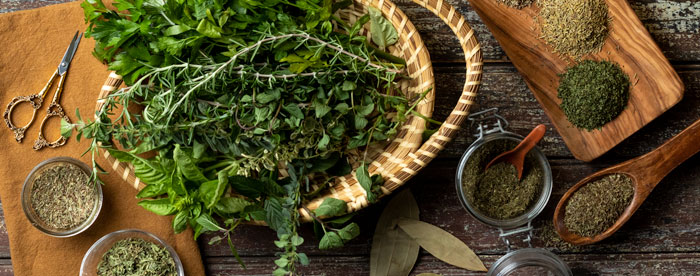
Fresh vs. Dried Herbs Conversion
When substituting fresh herbs for dry herbs, use three times the amount of fresh herbs to the amount of dried herbs indicated by a recipe. In other words, use three tablespoons of fresh oregano if the recipe calls for one tablespoon of dried oregano. Conversely, if your recipe calls for three tablespoons of fresh oregano and all you have is dried, use one tablespoon of your dried herb to start.
We’ve mentioned that volatile oils in dried herbs concentrate, making them more pungent.
This is the cause of the 3:1 ratio. It’s why dried basil tastes more peppery than fresh, and dried tarragon tastes more strongly like licorice than fresh, sweet tarragon. Their volatile oils will be more assertive if herbs are recently dried. As herbs age, their volatile oils degrade thanks to exposure to light and air. You may need to add more of an older dried herb to meet the flavor impact desired in a recipe. You should always taste and smell your dried herbs before use, especially if you aren’t sure how long they’ve been in your pantry.
While dried and fresh herbs are versions of the same things, they can deliver very different flavors to a dish, thanks to how their volatile oils are distributed throughout their leaves and veins. The herb’s physicality influences how it is used and at what point it is effectively introduced into a dish during cooking. Keeps herbs dry and away from light and air to protect their integrity as you store them. Always taste and smell your herbs before using them; the 3:1 ratio is a convenient rule of thumb but can be amended if your herbs have lost their flavor during storage.

